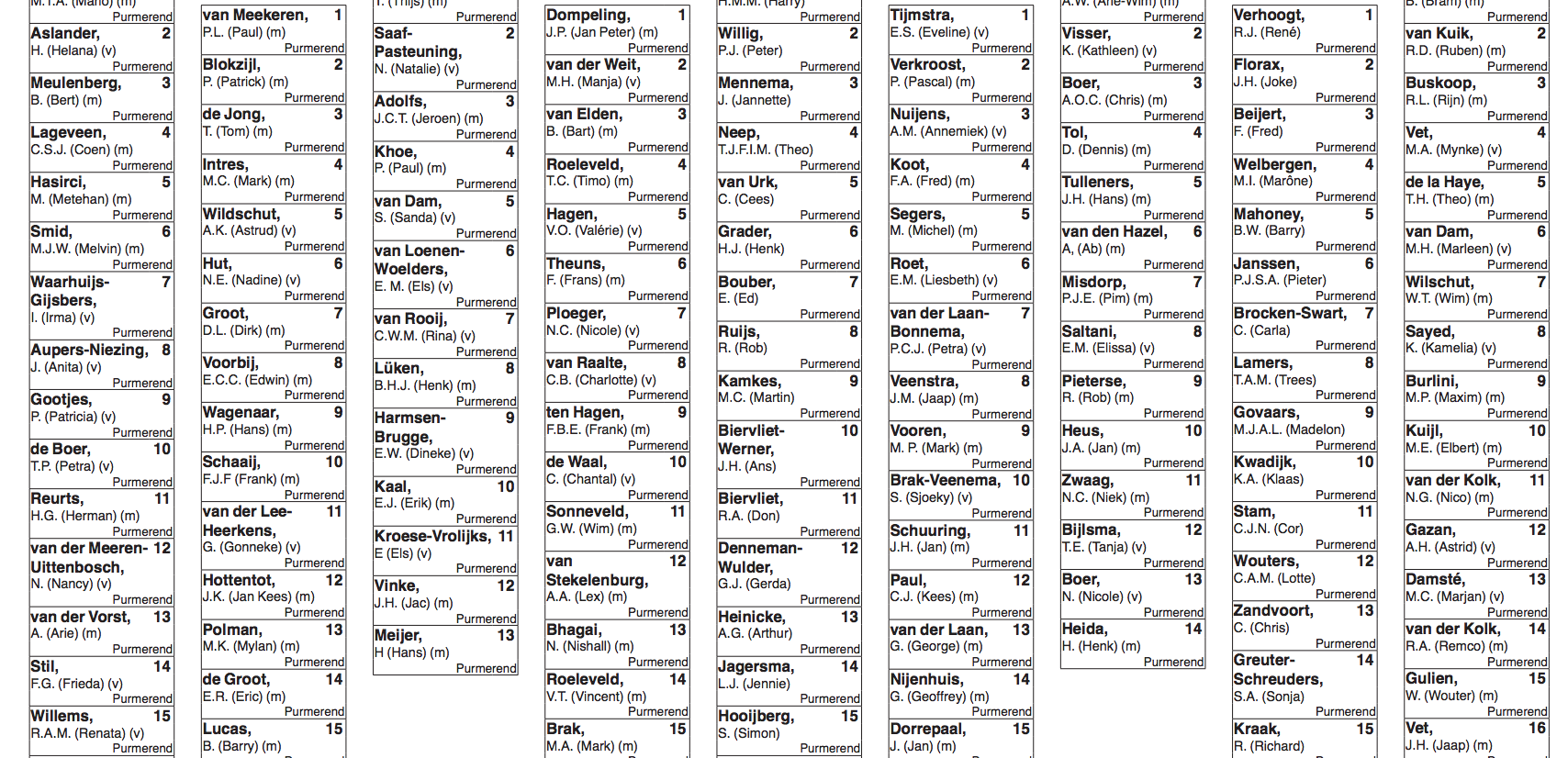A dataset with 53,733 candidates for the municipal elections this month is now available as open data. The data from candidate lists of 335 municipalities were collected manually and made accessible by NOS, LocalFocus and Open State Foundation. Despite the fact that the Elections Act stipulates in article I 17 that municipalities must publish lists of candidates in a generally accessible manner, this information – crucial for a transparent election process – is still not accessible centrally as open data.
Open data candidates
The collected data consists of information about all candidates who are eligible in 335 municipalities where municipal elections are held on 21 March 2018. The data include the name of the candidate (including initials and first name), the municipality, the place on the list, gender and place of residence. The dataset has been published in an open format, both in csv and JSON (ZIP) and made accessible to everyone via the data portal of the Open State Foundation.
Download 2018 Gemeenteraadsverkiezingen (csv | JSON)As an example, it could show that some candidates can be elected for more than one party and in more than one municipality.
Different shapes and sizes
Collecting lists of candidates and opening up the data is not made easy by the municipalities. Open State Foundation, along with the NOS and LocalFocus, visited 335 municipal websites between 20 February and 9 March 2018 in search of candidate lists. When information was not available, contact was sought with the municipality concerned with a request to make the information available.
Most municipalities publish a PDF file with the candidate lists. Some municipalities publish the standard official report on validity and numbering of candidate lists, a document that is made available for inspection by the electoral committee. Other municipalities publish lists of candidates in very different formats, from obliquely scanned PDF files, (like this or these) to this type of PDF files from the electoral lists such as those of the printer. Data is not easily accessible in this way.
There are also municipalities that only link to a website of the participating political parties but do not show information about the validity of the candidate lists. Only a few municipalities publish the official report on validity and numbering of candidate lists as rtf files. Because municipalities do not publish this information as open data via an unambiguous standard, it is not normally not clear of how many candidates the first name, the place of residence or that gender is not reported.
Data
The data consists of 53,733 candidates on more than two thousand lists of one thousand parties in 335 municipalities. Of the candidates of which the sex is known, only one third is a woman. The names Jan, Peter, Henk, Hans and Wim are popular among the candidates. Although the vast majority of the candidates are on a list of local parties, the national parties CDA and VVD have the most candidates on their lists. A list of candidates consists of between 1 and 50 candidates.
Open candidate lists
Contrary to the elections for the House of Representatives, the Electoral Council does not make this information public, but the municipalities themselves do so. After all, it is the mayor and aldermen of municipalities who are responsible for the organisation of municipal elections. After the day of application to which the parties have submitted their lists of candidates, the central electoral committee (in municipal elections under the responsibility of the mayor) then checks the validity of the candidate lists, the candidates that appear on them and the issued designation. An official report of this is drawn up and made available for inspection.
A lot of unnecessary work can be saved if the information from the official report can be easily accessed centrally as open data, for example by the Electoral Council. Since all municipalities use the same model official report to determine the validity of candidate lists, these data can be structured relatively easily and made public. Not only does this save municipalities a great deal of time so that they no longer have to answer different data requests, but it also prevents errors. For example, three municipalities – Woerden, Leiderdorp and Deventer – accidentally sent the citizen service numbers and other private details of candidate council members to the editorial office of the NOS.
Because various national and decentralised government organisations play a role in elections, it is important that a structural data infrastructure is created in which the crucial information for a transparent electoral process is made accessible to everyone. Although the current Elections Act does not provide for this, it should be made possible that this data is collected centrally by the Electoral Council and immediately opened up as open data.

